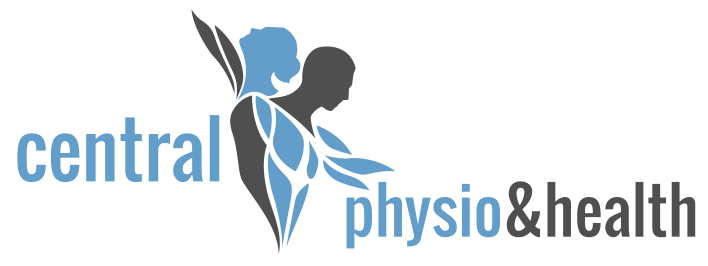Dry Needling vs Acupuncture
When you’re looking at different ways to deal with muscle pain and tension, you might come across two techniques: dry needling and acupuncture. Even though both involve sticking thin needles into your body, they have different reasons for doing it and work in different ways. Let’s break down what makes them different and when you might choose one over the other.
What is Dry Needling:
Imagine you have a sore muscle, like a knot in your shoulder that just won’t go away. Dry needling is like a targeted treatment for that knot. Health professionals like physiotherapists use super thin needles (similar to acupuncture needles) to poke into those tight spots, called trigger points, in your muscles. It’s called “dry” because they’re not injecting anything into your muscle, just gently poking it.
What is Acupuncture:
Now, acupuncture is a bit different. It’s been around for ages and comes from traditional Chinese medicine. They believe in this energy flow in your body called Qi (pronounced “chee”). Acupuncture aims to fix any blockages or imbalances in this flow by inserting those same thin needles, but into specific points along channels they call meridians. These points are thought to help restore the natural flow of energy and help your body heal.
Key Differences:
- Who does it: Acupuncture is usually done by trained acupuncturists, while dry needling can be done by various healthcare professionals with extra training.
- What they target: Acupuncture focuses on balancing your body’s energy flow, while dry needling targets muscle tightness and pain directly.
- What they treat: Acupuncture can be used for a wide range of health issues, while dry needling is mainly for muscle pain and related problems.
Why Choose Dry Needling Over Acupuncture?
When it comes to easing muscle pain and tightness, you might wonder why someone would pick dry needling instead of acupuncture. Here are a few reasons:
- Targeted Approach: Dry needling goes straight to the problem by targeting tight spots in your muscles called trigger points. If you have specific muscle pain or tension, dry needling can address it directly.
- Focused Treatment: Dry needling is mainly used for muscle-related issues, like strains, sprains, or chronic pain. So, if you’re dealing with muscle problems and want a treatment that focuses on those areas, dry needling might be the way to go.
- Faster Results: Since dry needling targets the problem areas directly, some people find they get quicker relief from muscle pain compared to acupuncture, which may take a few sessions to show results.
- Complementary Therapy: Dry needling can be easily combined with other treatments like physiotherapy. So, if you’re already undergoing these treatments, adding dry needling can enhance your overall therapy plan.
Does Dry Needling Work?
Recent research has shed light on the effectiveness of dry needling in treating various musculoskeletal conditions.
A study published in the Journal of Clinical Medicine examined the impact of dry needling therapy on patients with musculoskeletal issues. The findings showed success in reducing pain and improving functional outcomes. The procedure was deemed safe when performed by trained healthcare professionals, reassuring those considering this therapy option. Read more
Similarly, research published in the Journal of Orthopaedic & Sports Physical Therapy delved into the use of dry needling specifically in addressing musculoskeletal pain. The results highlighted its effectiveness in reducing pain and enhancing functional outcomes for individuals with various conditions such as neck pain, shoulder pain, and lower back pain. Read more
A recent meta-analysis supported these findings by assessing the overall effectiveness of dry needling across a spectrum of musculoskeletal conditions. The analysis had promising results, demonstrating significant reductions in pain levels and improvements in functional status compared to people who didn’t have dry needling. Read more
In a study highlighted in the Journal of Orthopaedic & Sports Physical Therapy, researchers explored the role of dry needling in treating sports-related injuries. Their findings highlighted its effectiveness in reducing pain associated with sports injuries and improving functional outcomes for athletes undergoing rehabilitation. Read more
These studies collectively emphasize the growing body of evidence supporting the efficacy of dry needling as a viable treatment option for a range of musculoskeletal conditions, providing hope and relief for individuals seeking to alleviate their pain and improve their quality of life.
Conclusion
When it comes to managing muscle pain and tension, the choices between dry needling and acupuncture offer distinct paths towards relief. Although both methods involve the gentle insertion of thin needles into the body, their aims and approaches differ significantly.
Dry needling, zeroes in on specific muscle knots or trigger points that cause discomfort. It’s like a precision tool designed to alleviate muscle tightness and pain directly, making it particularly good for addressing muscular issues such as strains, sprains, and chronic pain.
On the other hand, acupuncture, rooted in ancient Chinese medicine, takes a holistic approach, seeking to restore the body’s natural energy flow or Qi. By placing needles along meridians, acupuncture aims to rebalance the body’s energy, potentially offering relief for a wide range of health concerns beyond just muscle pain.
If you are interested in learning more about Dry Needling and if it is the right choice for you click THIS LINK to book in for a session with me.
Jasmine Pearce Higgins
Physiotherapist
Are our Gold Coast Physiotherapists the right fit for you?
If you have any questions about whether we can assist, we encourage you to give us a call 07 5679 3664 or email us at info@centralphysiohealth.com.au about any questions that you might have.





Recent Comments